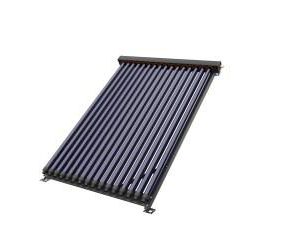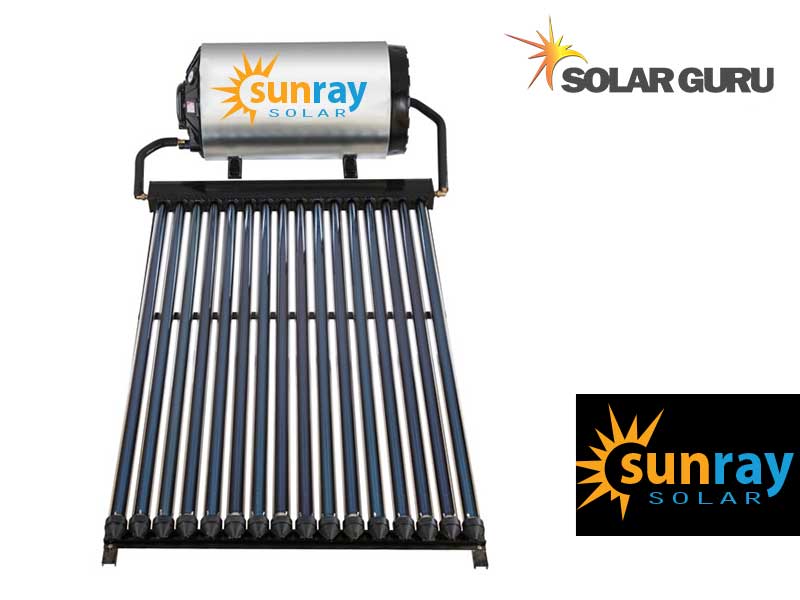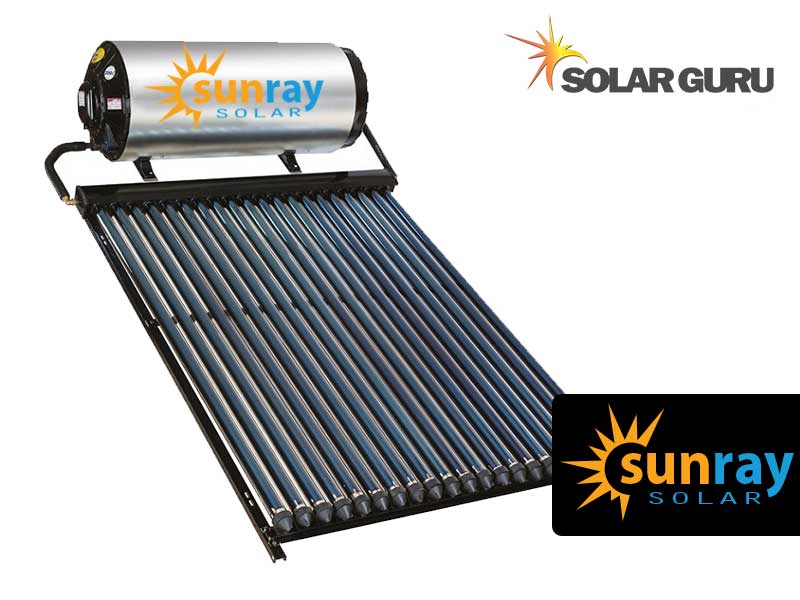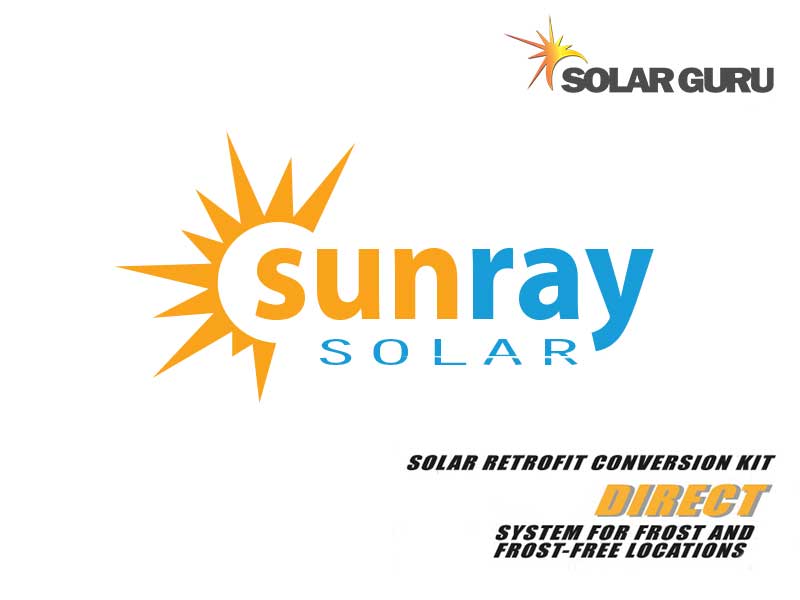
There are very few companies in South Africa that can boast that they have been in existence for over 100 years. Sunray, the market leaders and market innovators in domestic and industrial hot water storage systems, was established in 1903 and prides its self for achieving this unique milestone.
This achievement has come about by manufacturing high-quality products, a sustained new product development program and the dedication and willingness of its employees. There is no doubt that Sunray has become a household name in hot water storage systems over many years. To illustrate the company’s commitment to product quality, it was the first company to manufacture electric water heaters to the South African National Standards specification (SANS 151), previously the South African Bureau of Standards and was the first company to obtain the SABS 600kPa mark of approval. The company has been associated with the South African Bureau of Standards for over 50 years.
The company’s strategic direction is focusing on its core competencies, market intelligence and continually adding value to the company and its shareholders and which will indirectly also benefit the company’s suppliers, customers and the end user. Activities are coordinated through information sharing, proactive response to market trends and competitiveness of the company.
Sunray Manufacturing
Sunray employs the latest geyser manufacturing technologies via technology transfer agreements with European based geyser manufacturer’s.
In 1971 Sunray introduced high-pressure geysers into the South African Market. This was done with wet enamel coating technology in partnership with German Manufacturers. In 1999 the first continuous dry enamel electrostatic coating line was commissioned. This allowed for increased production, quality and efficiency.
In 2007 a second continuous electrostatic coating line was commissioned. This line benefits from further technology enhancements resulting in additional quality and efficiency. A fully automated boiler welding and the assembly line was commissioned in August 2008.
Sunray has a world-class modern ISO 9001 accredited manufacturing facility situated in Benoni, South Africa. The factory totals 80,000 m2 and boosts one of the most technologically advanced enameling plants in the world.
The manufacturing facility is geared to ensure that the high-quality standards are consistently met and that all products comply with SABS standards. The facility is being upgraded continuously, ensuring that Sunray retains its status as the innovative leader in hot water systems.
Roof location and Pitch
The solar vacuum tubes are to be installed in a parallel array and at an angle determined by the latitude of the installation.
For optimum performance, the solar vacuum tubes need to face the equator (facing north for southern hemisphere installations). Installation on angles of up to 45 degrees away from the equator do not have a major effect on the annual solar output, consequently, roof locations which face less than 45 degrees away from the equator are acceptable. Solar radiance from the sun begins at about 10:00 until about 16:00 and is at its peak between 12:00 and 14:00.
If the solar vacuum tubes are installed with an east facing bias, the best solar capture is achieved in the morning, and if the installed with west facing biased, in the afternoon.
The location should not be subject to excessive shading from trees and adjacent buildings and particularly between 9:00 and 15:00. Remember that shadows are longer in winter than in summer so a location that is free of shadows in the summer may have some shadows in winter.
The solar vacuum tubes should be installed on a roof pitch greater than 8 degrees and less than 30 degrees. Where the roof pitch is greater than 30 degrees, the installation will require additional support to prevent it from moving downwards when installing and after installing. If the roof pitch is less than 8 degrees the installation will require a mounting frame to increase the pitch to above 8 degrees. Installations below 8 degrees do not thermosyphon effectively and the solar collector panel glass will not clean properly when it rains.
If the solar water heater is installed on the roof, a careful inspection must be carried out to ensure that the roof can support the weight of the entire installation system once it is filled with water.
Circulation Methods
Pump Circulation in a Split System
It is not always possible or convenient to place the solar water heater in a higher position than the solar collector panels or solar vacuum tubes. A circulating pump, controlled by an electronic control unit, therefore becomes necessary. The control unit using two sensors constantly monitors the temperature of the solar collector panels or the temperature of the manifold for the vacuum tubes and the solar water heater, powering the circulation pump only when the water in the solar collector panel or manifold is hotter than the water in the solar water heater.
When the temperature difference is less than the set point during the working process of the circulating pump, the pump will stop.
When the temperature of the water in the solar water heater reaches the highest set point, the controller will stop the circulating pump.
The electrical thermostat and element will automatically maintain the water temperature of the upper part of the solar water heater.
The set temperature on the thermostat must be lower than the maximum temperature attainable on the solar collector panels or solar vacuum tubes.
The circulating pump must be installed in accordance with the manufacturer’s instructions and ease of access for maintenance/repair.
The split system can also be installed as a thermosyphon system, if there is sufficient roof space to locate the solar water heater above the solar collector panels or array of vacuum tubes (see installation diagram).
A 12V solar circulating pump can also be used, powered by a photovoltaic collector panel.
Installation Diagrams
Thermosyphon Circulation in a Close Coupled and Split Systems
The compulsory requirement for a thermosyphon system is that the solar water heater is placed in a position higher than the solar collector panels or a solar vacuum tubes and circulation occurs without any moving parts or auxiliary electrical energy input to the system.
This system operates according to a basic principle of physics: a liquid, if heated, becomes less dense and rises upwards.
Heated water in the solar collector panels or heated water in the vacuum tube manifold rises up into the solar water heater and displaces cold water, which travels back down to the solar collector panels of vacuum tube manifold.
When there is no solar radiation, the water in the solar collector panels or in the vacuum tube manifold, which becomes heavy, blocks the circulation and prevents the heat accumulated in the solar water heater from being dispersed.
Manufactured with an aluminium frame, 4mm toughened prismatic, non-reflective, anti-hail tempered glass.
Durable copper waterway tubes.
Rubber seals ensure durability and reliability in extreme climatic conditions.
Semi-selective black chrome surface on copper substrate offering maximum absorption efficiency.
Working Pressure up to 400kPa.
Total and useful energy rating 3.84kWh/m2
Features:
- The Kwiksol Solar Vacuum Tubes consist of two glass tubes manufactured from borosilicate glass.
- The outer glass tube is transparent allowing light rays to pass through it with minimum reflection.
- The inner glass tube is coated with a solar special selective coating (Al-N/A1), which provides excellent solar radiation absorption.
- The top of the two vacuum tubes are fused together and the air is extracted, which forms a vacuum and is key to the efficiency of the vacuum tubes.
- To maintain a vacuum between the two vacuum tubes, a barium getter is used. The barium layer also provides a clear visual indication of the vacuum status. The silver coating will turn white if the vacuum is ever lost.
- Anodized Aluminum frame and manifold.
- Working pressure up to 600kPa.
The solar vacuum tubes have a comprehensive 5-year warranty from date of installation and subject to the following conditions:
- The warranty only applies to defects, which have arisen solely due to faulty materials and workmanship during the manufacturing process of the solar collector/s.
- If any component fails during the warranty period, Sunray will replace or repair the failed component free of charge.
- Breakage or cracks to the evacuated tubes is not covered by the warranty.
- Any freeze damage caused as a result of the solar vacuum tubes not being installed as a direct system in frost areas or areas which record temperatures below 5 degrees Celsius, is not covered by the warranty.
- The warranty on the installation is the responsibility of the installer.
The period of warranty is from the date of installation, providing that documented proof of installation is furnished, or alternatively from date of manufacture as determined from the serial plate code on the solar water heater.
One year on the heating element, thermostat, flange assembly plate and gasket.
Two years on the Safety Valve and Drain Cock.
Five years on the inner cylinder, subject to water conditions equivalent to main Metropolitan supply authorities. This warranty is subject to only genuine Sunray replacement parts (heating element and thermostat etc) being used whilst the inner cylinder is still under guarantee.
The warranty on the installation is the responsibility of the installer.
Water specification and Anode servicing/replacement as follows:





